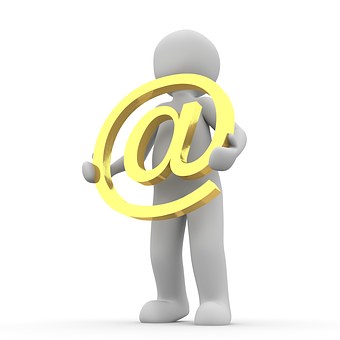Email Not Receiving
There are few things as frustrating in our digital-dominated era as experiencing Email Not Receiving and Email Not Sending problems. You sit at your desk, refreshing your inbox, waiting for an important email that never appears, or meticulously composing a crucial message, only to find it’s stuck in your outbox, refusing to be sent.
These issues are more common than you might think, affecting everyone, from corporate professionals to individuals trying to connect with their social circle. Understanding and troubleshooting these Email Not Receiving and Email Not Sending concerns are essential for smooth digital communication in our fast-paced world.
In this blog post, we delve into these frustrating scenarios, unpacking why they happen and offering practical solutions to overcome them. We’ll shed light on the possible causes, walk you through step-by-step troubleshooting strategies, and equip you with preventative measures to avoid future email hiccups.
Our goal is to help you navigate the complexities of email communication, ensuring no message you send goes unsent and no message intended for you goes unseen. Join us as we reclaim the reliability and efficiency of Email, turning these often vexing issues into manageable, solvable tasks.
Causes of Not Receiving Emails:
Understanding the reason behind any issue is the first step towards resolving its Common Reasons for Not Getting Emails and Email in Outbox Not Sending.
- Full Mailbox: Often, the reason you’re Not Getting Emails is as simple as having a full mailbox. When your storage quota is reached, new emails can’t be delivered. Similarly, an Email in Outbox Not Sending situation may also arise due to insufficient storage.
- Incorrect Email Address: If you’re Not Receiving Mail, one possible reason is an incorrectly typed email address. On the flip side, when an Email in Outbox Not Sending, the recipient’s address might be incorrect or non-existent.
- Spam Filters: Sometimes, you’re Not Getting Emails because your email system or service provider’s spam filters might redirect emails to your Spam folder. If you’re Not Receiving Mail that you were expecting, this is one of the first places to check. Likewise, if your Email in Outbox Not Sending, it might be perceived as spam by the recipient’s email system.
- Internet Connection Issues: Issues with your internet connection can often result in Not Receiving Mail or your Email in Outbox Not Sending. Poor or unstable connections can interfere with the smooth sending and receiving of emails.
- Server Issues: If you’re Not Getting Emails or your Email in Outbox is Not Sending, the server of your email service provider may be down or experiencing technical issues.
- Outdated Email Client: If your email client isn’t up-to-date, it might result in you Not Receiving Mail. This could also cause your Email in Outbox Not Sending, especially if the updates included critical security patches or functionality improvements.
Understanding these common reasons allows you to quickly diagnose and solve these frustrating issues, ensuring smooth and reliable email communication.
How to Fix Email not Receiving Issue:
To fix the not receiving email or not sending emails issue, Please follow the below mentioned guide:
- Check Spam or Junk Folders: When you’re Not Receiving Emails or Not Getting Mails, the first stair is to check your spam or junk folders. Sometimes, legitimate emails can be mistakenly flagged as spam. If you find any expected emails in these folders, mark them as not spam to ensure future delivery.
- Verify Email Address and Contacts: Ensure that the sender has entered your email address correctly. Double-check for any typos or misspellings. Additionally, make sure the sender’s email address is not blocked or filtered on your email client or service.
- Review Email Filters and Rules: Check if you have any email filters or rules set up that could be diverting or deleting incoming emails. Adjust or disable these filters if they are not necessary or if they are causing the Email Not Receiving issue.
- Check Email Storage Space: If you’re Not Getting Mails, it’s essential to ensure you have enough storage space in your email account. Delete unnecessary emails and empty your trash or deleted items folder to free up space.
- Review Email Client Settings: Verify your email client settings to ensure they are correctly configured for incoming mail. Check the incoming server settings, such as the POP3 or IMAP settings, and make sure they match the requirements of your email service provider.
- Check Internet Connection: A steady internet connection is crucial for receiving emails. If you’re Not Receiving Emails or Cannot Send Emails, check your internet connection to ensure it is working properly. Restart your router or change to a different network if needed.
- Confirm Outgoing Mail Server Settings: If you’re Cannot Send Email, verify the outgoing mail server (SMTP) settings in your email client. Ensure they match the requirements of your email service provider. Consider contacting your provider’s support for specific instructions.
- Disable Firewall or Antivirus: Sometimes, firewalls or antivirus software can interfere with email communication. Temporarily deactivate any third-party firewall or antivirus software and check if the issue persists.
By following these steps, you can address the issue of Email Not Receiving Emails and Cannot Send Email, ensuring a smooth and uninterrupted flow of communication in your email account.
How to Prevent Email Not Receiving issue:
 Facing such an issue is irritating; in this section of the blog post, we will guide you through the steps on how to avoid Email Not receiving emails & sending issues.
Facing such an issue is irritating; in this section of the blog post, we will guide you through the steps on how to avoid Email Not receiving emails & sending issues.
- Double-check Recipient’s Email Address: Before sending an email, always verify the recipient’s email address for accuracy. Pay close attention to any typos or missing characters. Even a minor mistake can result in your Email being sent to the wrong address or not reaching the intended recipient.
- Use Descriptive Subject Lines: When composing emails, ensure your subject line clearly reflects the content of the Email. A concise and informative subject line increases the chances of your Email being recognized and opened by the recipient.
- Avoid Overusing Attachments or Large Files: Sending large attachments or multiple files can cause delivery issues or delays. Consider compressing files or using file-sharing services instead. This helps prevent your Email from being blocked or rejected by the recipient’s email server due to file size limitations.
- Avoid Using Excessive Formatting or HTML: Excessive formatting or HTML in your emails can trigger spam filters or cause display issues on the recipient’s end. Stick to simple and clean formatting to ensure proper delivery and readability.
- Regularly Update Email Client and Antivirus Software: Keep your email client and antivirus software up to date to benefit from the newest security patches and bug fixes. Outdated software can sometimes interfere with email delivery and reception.
- Monitor and Clean up Your Inbox: Regularly review and clean up your inbox to ensure it doesn’t reach its storage limit. Delete unnecessary emails and organize your inbox to prevent any disruptions in receiving new emails.
- Check Spam or Junk Folders: Occasionally, legitimate emails may end up in the recipient’s spam or junk folders. Advise your recipients to check these folders and mark your emails as “not spam” if they find them there.
- Configure Email Filters and Rules: Take advantage of email filters and rules to sort incoming emails and avoid missing important messages. Configure filters based on sender, subject, or specific keywords to ensure timely access to crucial emails.
- Test Email Delivery: If you suspect that your emails not being received, consider sending a test email to a trusted recipient and requesting confirmation of its receipt. This can help identify any latent issues with your email delivery.
By implementing these prevention measures, you can reduce the likelihood of encountering issues such as Email Sent but Not Received by Recipient and Cannot Receive Emails. Consistent vigilance and attention to detail will ensure that your email communication remains efficient and reliable.
Conclusion:
 The challenges of Email Not Receiving and Email Not Sending can be frustrating and disruptive to our daily communication. Whether you find yourself anxiously awaiting an important email that never arrives or encountering difficulties in sending out crucial messages, these issues can leave us feeling isolated and overwhelmed.
The challenges of Email Not Receiving and Email Not Sending can be frustrating and disruptive to our daily communication. Whether you find yourself anxiously awaiting an important email that never arrives or encountering difficulties in sending out crucial messages, these issues can leave us feeling isolated and overwhelmed.
However, armed with the knowledge of common causes and effective solutions, we can overcome these hurdles and regain control over our email communication. By double-checking email addresses, monitoring spam filters, and ensuring sufficient storage space, we can address the problem of Email Not Receiving head-on. Similarly, verifying recipient addresses, reviewing email client settings, and maintaining a stable internet connection can help us resolve the challenge of Email Not Sending.
Prevention is also key in maintaining smooth email operations. By employing best practices such as using descriptive subject lines, avoiding excessive attachments or formatting, and keeping our software up to date, we can minimize the occurrence of these issues.
Remember, effective email communication is a two-way street. It’s essential to communicate clearly, double-check recipient information, and maintain a clutter-free inbox to facilitate efficient email delivery.
By applying these strategies and staying proactive in our approach, we can confidently navigate the maze of Email Not Receiving and Email Not Sending. Let’s reclaim the reliability and convenience that emails are meant to provide, ensuring that our messages reach their intended recipients, and our inboxes remain open to important correspondence. To know more about Emails and resolve any specific brand issue, please visit our Homepage.

